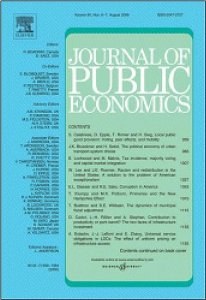
Hummel, A. (2023). Tax curvature Journal of Public Economics, 224:.
-
Affiliated author
-
Publication year2023
-
JournalJournal of Public Economics
In a Mirrleesian environment, a monopsonist sets hourly wages and individuals choose how many hours to work. Labor market outcomes do not only depend on the level and slope of the income tax function, but also on its curvature. A more concave tax schedule raises the elasticity of labor supply, which boosts wages. Consequently, optimal marginal tax rates for low-skilled workers are declining in income. I derive an optimal tax formula in terms of sufficient statistics that accounts for the impact of tax curvature on labor market outcomes. Numerical simulations suggest that optimal marginal tax rates decline rapidly at low incomes.